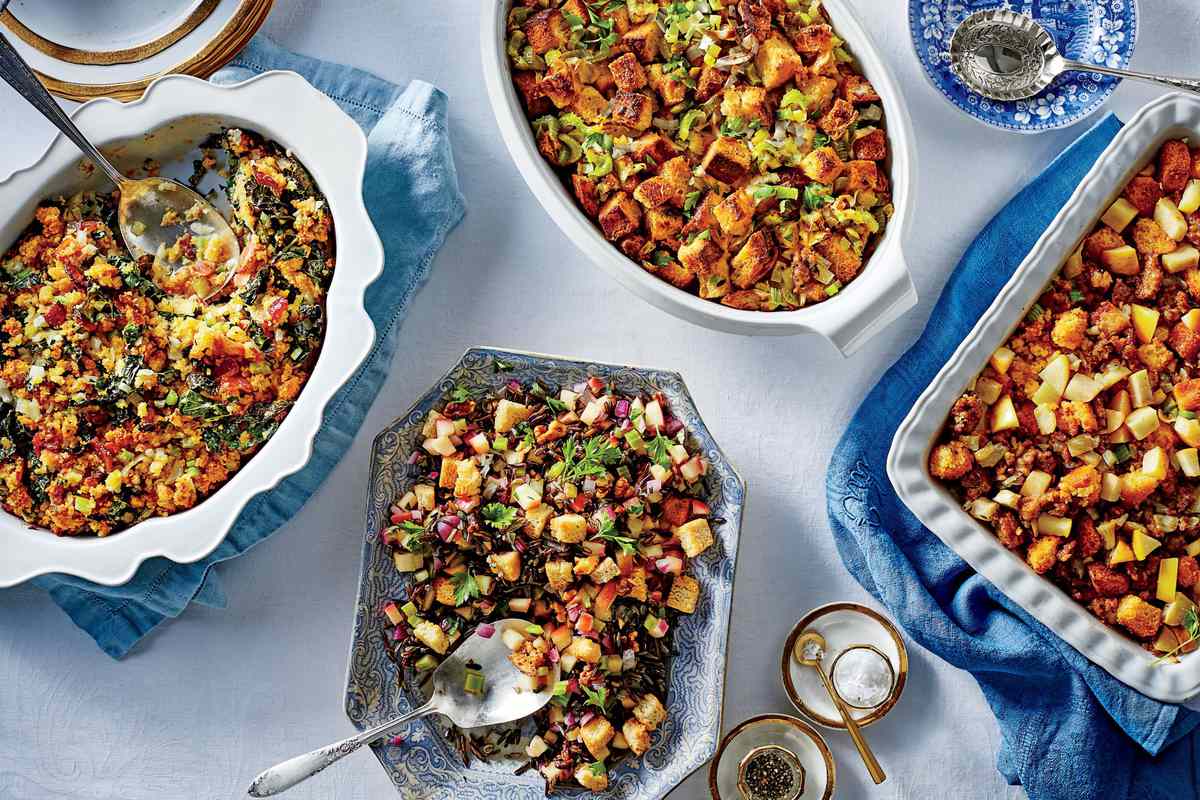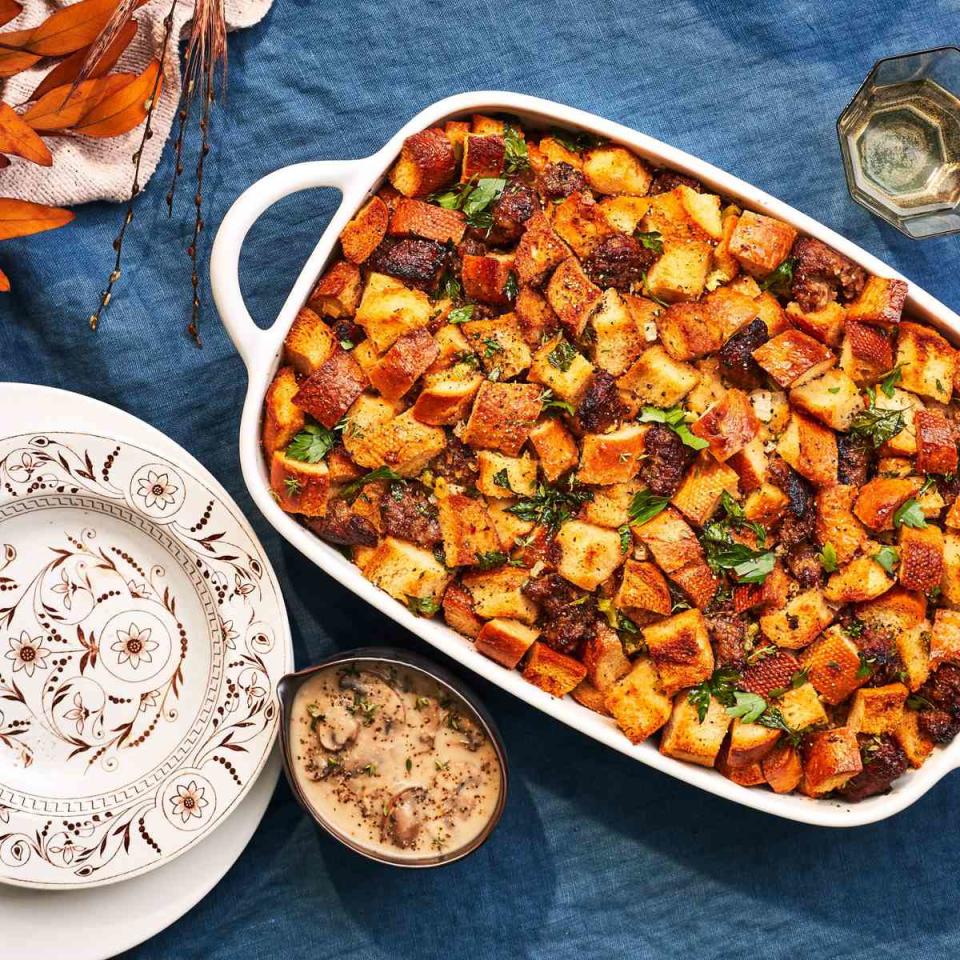Don't Even Think About Putting This In Your Thanksgiving Dressing

Iain Bagwell
The dressing is the wild card in all the dishes on the Thanksgiving sideboard, traditionally made with sliced bread or cornbread, although you can also throw some rice in there. Besides the bread, Thanksgiving dressing recipes vary as much as the families making them.
Add chestnuts, dried fruit, mushrooms, green chiles, bacon, and cheese—the list of possibilities goes on. You can make it extra meaty, or you can go vegan. Dressing can be slightly sweet or ultra-savory, use fresh herbs or be dried, and even be cooked in a pan or inside the turkey.
You can make it from a box or entirely from scratch—you can even deep-fry it. I am partial to our Classic Bread Dressing, but I also love dressing with crispy bits of sausage, like our Cornbread Dressing with Sausage and Fennel.

Victor Protasio; Food Styling: Margaret Monroe Dickey; Prop Styling: Audrey Davis
But there is one thing that has no place in any Thanksgiving dressing—raw vegetables. Every good dressing recipe starts with some aromatics: chopped onion, celery, garlic—maybe even a bell pepper or some fennel. When cooked until caramelized and tender, these vegetables form the foundation of the dressing. However, they are not the show's stars. That role belongs to the tender bread and add-ins like crumbled sausage and toasted pecans. Aromatics give every bite of dressing depth of flavor and help marry all the different flavors together.
Although raw vegetables will bake in the oven with the other dressing ingredients, they will not correctly soften and caramelize. At best, they won't taste like much. At worse, they will add unpleasant crunchy bits throughout your dressing.
Have fun customizing your Thanksgiving dressing to your and your family's preferences. Just don't forget to cook your aromatics.

